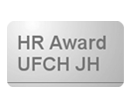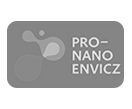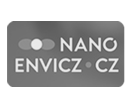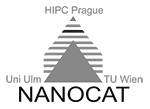Instrumentation of Department of Structure and Dynamics in Catalysis
A: Major Equipment
1) 500 MHz MAS NMR spectrometer Bruker Avance III HD 500 WB/US NMR (upgrade 2013, in the Joint Laboratory of ss-NMR Spectroscopy of Institute of Macromolecular Chemistry ASCR and JHIPC)
- 7-mm N-P/H probehead
- 4-mm N-P/H-F probehead
- 4-mm X/Y/H probehead
- 3.2-mm N-P/H-F probehead
- 2.5-mm N-P/F-H probehead
2) UV-Vis-NIR spectrometer Perkin-Elmer Lambda 950
- Two integrating sphere attachments for diffuse-reflectance measurements at UV-Vis-NIR with spectralon coating
- Integrating sphere attachment for diffuse-reflectance measurements at NIR with coating by gold
- Harrick through flow cell for elevated temperatures for measurements with praying mantis
3) Four FTIR spectrometers Nexus 670 e.s.p. (Thermo Nicolet Co.)
- MKS detectors
- DTGS KBr
- ATR and reflectance accessories
- Twice high-low pressure IR reactor In-Situ Research - Instruments, USA one equipped by AvaSpec-2048FT Fast Trigger Fiber Optic UV-Vis Spectrometer Avantes and one with GC gas analysis.
4) Catalytic apparatuses
- Computerized catalytic reactors for hydrocarbon transformations equipped with gas chromatograph with GC (HP 5890, HP 6890, HP 5971A, HP 6850, Finnigan 9001 with GC-FID, TCD, MSD) and MS detection (GC-MS spectrometer Agilent, Quadrupole mass spectrometers QMA 125, QMG 421C, QMG 420)
- Computerized Microactivity-Reference catalytic reactors PIDENG&TECH with GC detection
- Computerized catalytic reactors for N2O/NO/NO2 abatement reactions with NO/NOx chemoluminescence analyzers VAMET, Analyzer Advanced Optima 200/Limas 11HW ABB, N2O analytical system Advance Optima Hartmann & Brown and GC detection
B: Available Methods
1) Preparation of heterogeneous catalysts and sorbents
- Hydrothermal synthesis and preparation of inorganic materials including zeolites in 50 ml - 2.2 l autoclaves
- Modification of catalysts forms (acid, base, redox) by ion exchanges and impregnations
- Basic characterization of products (XRD, SEM)
2) Characterization of catalytic activity of acid and base heterogeneous catalysts
- Through-flow catalytic experiments, including elevated pressure
- Batch catalysts and kinetic testing (100 ml - 2.2 l autoclaves)
- GC and MAS spectroscopy analysis of products
3) Characterization of acid and base heterogeneous inorganic catalysts
- Characterization of acidic properties by TPD and FTIR spectroscopy of adsorbed probes
- Characterization of redox properties by TPR, FTIR, Mössbauer spectroscopy and UV-Vis spectroscopy
- Characterization of catalysts by XRD, SEM, TEM
4) NMR spectroscopy of inorganic solids
- Setup for treatment/evacuation of samples & sealing prior spectra measurement
5) UV-Vis-NIR spectroscopy in transition and diffuse-reflectance mode
- Measurement of liquids, powders, turbid media
- Measurement in transmission, reflection and diffuse reflection mode
- Measurement at elevated temperatures and different gases
6) FTIR spectroscopy in transition and diffuse-reflectance mode
- Home-made cells for measurement in different atmospheres and treatment of samples at elevated temperatures
- Through flow cell for in situ measurement at elevated temperatures
C: Auxiliary equipment
1) TPD/TPR catalyst characterization system AutoChemHP Micrometric























